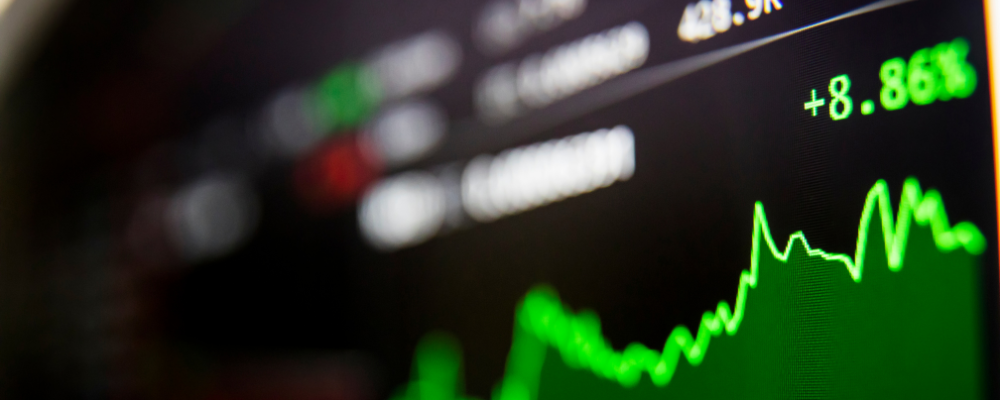Forex swing trading: how to capture market moves like a pro

Swing trading in Forex is a popular strategy that balances short-term gains with manageable risk. Traders aim to capture price swings over several days or weeks, using technical indicators to identify entry and exit points. In this case study, we’ll break down what Forex swing trading is, explore key indicators, analyze a real example, and highlight the best FX brokers for swing traders.
What is Forex swing trading?
Forex swing trading is a strategy that seeks to capture price movements or “swings” within a trending market. Traders typically hold positions for several days to a few weeks, targeting price shifts during that period. Unlike day trading, which involves entering and exiting positions within the same day, swing trading allows for more relaxed monitoring while still taking advantage of significant market moves.
The goal of swing trading is to identify price “swings” that occur in the context of the overall trend, capitalizing on both short-term fluctuations and longer-term directional moves. This strategy often relies on technical analysis to time entries and exits effectively.
Popular instruments for swing trading
Swing traders typically focus on currency pairs and assets that offer high liquidity and consistent price movements. Here are some popular instruments for Forex swing trading:
- EUR/USD – As the most traded currency pair, EUR/USD provides plenty of opportunities with tight spreads and clear price movements.
- GBP/USD – Known for its volatility, GBP/USD can offer larger swings, making it ideal for traders comfortable with bigger moves.
- USD/JPY – This pair is often influenced by global risk sentiment and can offer smoother trends suitable for swing trading.
- Gold (XAU/USD) – A favorite for traders seeking safe-haven assets, gold can provide strong price swings, especially during periods of economic uncertainty.
- US30 (Dow Jones) – A major stock index that moves with broader market sentiment, making it popular among Forex swing traders who prefer index trading.
Swing trading examples

Example 1: Trend following swing trade (EUR/USD)
✔ Scenario: EUR/USD is trending upwards after a strong economic report from the Eurozone. The trader looks for a pullback to a key support level, such as the 50-day moving average, to enter the trade.
✔ Entry point: The trader enters a buy position when the price bounces off the support level, confirming the continuation of the uptrend.
✔ Exit strategy: The target is set at the next resistance level, with a stop-loss placed below the swing low to limit risk.
✔ Pro tip: Ensure the trend is clear before entering a trade. Use trendlines or moving averages to confirm the direction.
Example 2: Range-bound swing trade (GBP/USD)
✔ Scenario: GBP/USD is trapped in a sideways range between a well-defined support and resistance. The trader anticipates the price will continue to bounce within this range.
✔ Entry point: The trader buys near the support level when the price shows signs of reversing upward.
✔ Exit strategy: The trader sells near the resistance level once the price reaches it, capturing the swing.
✔ Pro tip: Use the RSI or Bollinger Bands to help confirm when the price is near overbought or oversold levels within the range.
Technical indicators for swing trading and how to use them
1. Moving Averages (MA)
➡ How to use: Moving averages smooth out price data to identify the direction of the trend. A common strategy is using the 50-day and 200-day moving averages to identify trends and potential reversal points.
- Bullish signal: When the price is above the 50-day MA, the trend is likely upward.
- Bearish signal: When the price is below the 50-day MA, the trend is likely downward.
- Pro tip: A crossover of the 50-day and 200-day MAs can indicate a change in the trend, with the “Golden Cross” signaling a buy and the “Death Cross” signaling a sell.
2. Relative Strength Index (RSI)
➡ How to use: RSI measures momentum and shows overbought (>70) or oversold (<30) conditions. For swing trading, traders use RSI to identify potential reversal points.
- Overbought (>70): Indicates that the market may reverse down.
- Oversold (<30): Indicates that the market may reverse up.
- Pro tip: Combine RSI with other indicators, like moving averages or Bollinger Bands, to confirm reversal signals.
3. Bollinger Bands (BB)
➡ How to use: Bollinger Bands consist of three lines: a simple moving average and two standard deviation bands above and below it. The bands help assess market volatility and potential price reversals.
- Upper band (Overbought): If the price hits the upper band, it may signal a sell opportunity.
- Lower band (Oversold): If the price hits the lower band, it may signal a buy opportunity.
- Pro tip: Look for “squeeze” patterns where the bands narrow, signaling a potential breakout when the price moves out of the squeeze zone.
4. Fibonacci Retracement
➡ How to use: Fibonacci retracement helps identify key support and resistance levels after a significant price move. Traders use the Fibonacci levels (23.6%, 38.2%, 50%, 61.8%, 100%) to find potential reversal points.
- Pro tip: If the price retraces to a Fibonacci level and shows signs of reversing (such as a candlestick pattern), it can be a strong entry signal. Combine it with RSI or MACD for additional confirmation.
5. MACD (Moving Average Convergence Divergence)
➡ How to use: MACD is a momentum indicator that shows the relationship between two moving averages. It helps identify shifts in momentum.
- Bullish signal: When the MACD line crosses above the signal line.
- Bearish signal: When the MACD line crosses below the signal line.
- Pro tip: Look for divergences between the MACD and price action. If the price is making new highs but the MACD isn’t, it could indicate weakening momentum and a potential reversal.
Real case study: USD/JPY swing trade

Real case study: USD/JPY swing trade
✅Case study: USD/JPY swing trade setup
✅Market context: USD/JPY has been in a strong uptrend due to a hawkish Federal Reserve and weaker Japanese economic data.
✅Entry point: The price retraced to the 38.2% Fibonacci level, forming a bullish reversal candle near the 50-day moving average. The RSI was at 40, indicating room for further upside.
✅Trade execution: The trader enters a long position when the price confirms the reversal at the Fibonacci level. A stop-loss is placed below the recent swing low to manage risk.
✅Exit strategy: The trader sets a target at the next significant resistance level (previous swing high), using the 61.8% Fibonacci extension as the profit target.
✅Outcome: The trade successfully reaches the target, with a 3:1 reward-to-risk ratio, demonstrating the effectiveness of using multiple technical indicators to confirm trade setups.
The best brokers for Forex swing trading
Choosing the right broker is crucial to make the most of swing trading strategies. Here are five top brokers that offer excellent trading conditions, competitive spreads, and advanced tools for swing traders:
HF Markets (HotForex) FX trading
HF Markets – Provides tight spreads, a range of trading platforms (MT4/MT5), and strong risk management tools, making it an ideal choice for swing traders.
Exness FX trading
Exness – Offers flexible leverage, fast execution, and a variety of account types suited for both beginners and experienced traders.
AvaTrade FX trading
AvaTrade – Known for its advanced charting tools, automated trading features, and a wide range of instruments, including forex, commodities, and indices.
XTB FX trading
XTB – Provides a user-friendly platform with high-quality market analysis, excellent educational resources, and competitive spreads for swing trading.
eToro FX trading
eToro – A great option for beginners with its social trading and copy trading features, allowing traders to learn from experienced professionals.
Risk disclaimer: eToro is a multi-asset platform which offers both investing in stocks and cryptoassets, as well as trading CFDs.
CFDs are complex instruments and come with a high risk of losing money rapidly due to leverage. 61% of retail investor accounts lose money when trading CFDs with this provider. You should consider whether you understand how CFDs work, and whether you can afford to take the high risk of losing your money.
This communication is intended for information and educational purposes only and should not be considered investment advice or investment recommendation. Past performance is not an indication of future results.
Copy Trading does not amount to investment advice. The value of your investments may go up or down. Your capital is at risk.
Don’t invest unless you’re prepared to lose all the money you invest. This is a high-risk investment and you should not expect to be protected if something goes wrong. Take 2 mins to learn more.
eToro USA LLC does not offer CFDs and makes no representation and assumes no liability as to the accuracy or completeness of the content of this publication, which has been prepared by our partner utilizing publicly available non-entity specific information about eToro.
Related articles:
Forex swing trading - FAQ